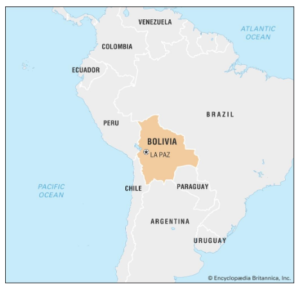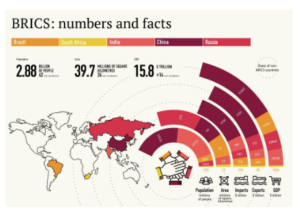IASbaba's Daily Current Affairs Analysis
IAS UPSC Prelims and Mains Exam – 13th November 2019
Archives
(PRELIMS + MAINS FOCUS)
Cancer Care facilities
Part of: GS Prelims and GS-II – Health
In News
- India’s cancer care infrastructure is “highly inadequate” and forces a majority of patients to travel “thousands of kilometres” for treatment
- The “systematic failure” to address the needs of patients contributes to a 20% higher mortality among Indian cancer patients than in countries with a “high” Human Development Index, said a report by a Parliamentary Standing Committee on Science, Technology and Environment.
- Mortality to incidence ratio of 0.68 in India is higher than that in very high human development index (HDI) countries (0.38) and high HDI countries (0.57).
- The committee was constituted to examine an expanded role for the Department of Atomic Energy, through the Tata Memorial Centre (TMC), to address India’s rising cancer burden.
- The committee recommended t a ‘Hub and Spoke Model’(already in practice in Punjab) proposed by the TMC to better reach out to cancer patients nationally.
Do You Know?
- The incidence, or the number of newly diagnosed cases of cancer annually, is about 16 lakh in India.
- The disease kills 8 lakh people annually in India.
- India’s cancer burden is expected to increase from an estimated 13 lakh cases in 2018 to about 17 lakh in 2035, and cancer deaths are expected to rise from 8.8 lakh in 2018 to 13 lakh in 2035.
- Two-thirds of India’s cancer patients were treated in the private sector and this forced 6 crore Indians below the poverty line because of “catastrophic healthcare related expenditure on cancer”.
e-NAM
Part of: GS Prelims and GS-III –Economy
In News
- States were being “cajoled to reject” the agricultural produce marketing committee (APMC) system in favour of E-NAM i.e. National Agriculture Market which is a pan-India electronic trading (e-trading) portal.
- It seeks to network the existing physical regulated wholesale market (known as APMC market) through a virtual platform to create a unified national market for agricultural commodities.
- Only 1.6 crore farmers have registered on the portal so far, from among the almost 12 crore cultivators in the country but only about half of those registered have benefited from the platform.
- Out of almost 2,500 APMCs, 585 in 18 States have been connected to the e-NAM portal so far.
- Interstate trade, which has the potential to give farmers wider market access and better prices, has 21 APMC mandi participants in 8 States so far.
- NABARD is now ready to operationalise a ₹2,000 crore agri-market infrastructure fund aimed at upgrading 585 APMCs and 10,000 gramin agricultural markets
About APMC
- It is a statutory market committee constituted by a State Government in respect of trade in certain notified agricultural or horticultural or livestock products,under the APMC Act issued by that state government.
- The whole geographical area in the State is divided and each one is declared as a market area which is managed by the Market Committee (APMC) constituted by the State Government.
- Once a particular area is declared as a market area and falls under the jurisdiction of a Market Committee, no person or agency is allowed to freely carry on wholesale marketing activities.
- APMC Acts provide that first sale in the notified agricultural commodities produced in the region such as cereals, pulses, edible oilseed, fruits, vegetables etc., can be conducted only under the aegis of the APMC, through its licensed commission agents.
- The producers of agricultural products are thus forced to do their first sale in these markets which in reality works as cartel deny fair price discovery of agricultural produce.
Tiger Triumph
Part of: GS Prelims and GS Mains II – International Relations
In News
- Tiger Triumph is the maiden India- US joint Tri services Humanitarian Assistance and Disaster Relief (HADR) Exercise.
- The Exercise is aimed to developing interoperability for conducting HADR operations.
- Indian Naval ships Jalashwa, Airavat and Sandhayak, Indian Army troops from 19 Madras and 7 Guards, and Indian Air Force MI-17 helicopters and Rapid Action Medical Team (RAMT) would be participating in the exercise. The US would be represented by US Navy Ship Germantown with troops from US Third Marine Division.
Pneumonia, diarrhoea still a big threat
Part of: GS Prelims and GS Mains II – Health
In News
- The 10th Pneumonia and Diarrhoea Progress Report was released by the International Vaccine Access Center (IVAC) at the Johns Hopkins Bloomberg School of Public Health
- This report analyses how effectively countries are delivering 10 key interventions, including breastfeeding, vaccination, access to care, use of antibiotics, ORS, and zinc supplementation.
- In India, Pneumonia killed more than 1.27 lakh children under five- accounting for 14% of child deaths.
- India’s has high breastfeeding rate, at 55%, however, the proportion of children receiving important treatments remains below targets. Half of the children with diarrhoea receive ORS (oral rehydration solution) and 20% receive zinc supplementation — to help protect against, prevent and treat pneumonia and diarrhoea
- Rollout of rotavirus vaccines, beginning in 2016, and the pneumococcal conjugate vaccine, beginning in 2017, helped India’s improve on these parameters.
- In 2017, the highest risk factors for child pneumonia death in India were: 53% caused by child wasting, 27% by outdoor air pollution, and 22% caused by indoor air pollution from solid fuels.
- Globally, pneumonia and diarrhoea led to nearly one of every four deaths in children under five years of age in 2017.
Miscellaneous
MaulanaAbulKalam Azad
- National Education Day was celebrated on November 11 to commemorate the Birth Anniversary of Maulana Abu lKalam Azad.
- He was the first Education Minister of independent India, who served from 15 August 1947 until 2 February 1958.
- Under his leadership, the Ministry of Education established the first Indian Institute of Technology in 1951 and the University Grants Commission in 1953.
- He also laid emphasis on the development of the Indian Institute of Science, Bangalore and the Faculty of Technology of the Delhi University.
- As Chairman of the Central Advisory Board of Education, he gave thrust to adult literacy, universal primary education, free and compulsory for all children up to the age of 14, girls education, and diversification of secondary education and vocational training.
(MAINS FOCUS)
POLITY
TOPIC: General Studies 2:
- Effect of policies and politics of developed and developing countries on India’s interests
Bolivia Crisis
Context:
- The President of Bolivia, Evo Morales, has resigned amid turmoil following his disputed re-election last month. He has been in power for nearly 14 years. He left the post after losing the support of the army and the police.
- Bolivia has been rattled by weeks of anti-government protests following the reports of election fraud

Daily Current Affairs IAS | UPSC Prelims and Mains Exam – 13th November 2019
- The Bolivia is a landlocked country located in South America. It is bordered to the north and east by Brazil, to the southeast by Paraguay, to the south by Argentina, to the southwest by Chile, and to the northwest by Peru.
- Alongside Paraguay, it is one of the only two landlocked countries in the Americas
Rise of Evo Morales – Socialist Leader who enjoyed support from within and beyond Bolivia
- He rose to prominence as a labour union leader among coca leaf growers, promoting the rights of Bolivia’s Indigenous majority.
- His passionate defence of the farmers and indigenous people led to clash with the country’s conservative and overwhelmingly white political elite. In 2006, he became Bolivia’s first Indigenous president since the country’s independence from Spain two centuries ago.
- He quickly moved to empower Indigenous people, redistribute the nation’s natural gas wealth and bring infrastructure to poor communities, measures that made him the most popular Bolivian politician in decades
- Unlike his high-spending left-wing allies in Venezuela and Argentina, however, Mr. Morales combined redistribution with maintaining a balanced budget and wooing international investors.
Impact of his redistributive Policies
- Benefiting from the commodity boom in the 2000s, Mr. Morales transformed Bolivia, one of South America’s poorest nations, into one of its most dynamic economies,
- Under his fairly good track record, Bolivia has seen a drop in extreme poverty, from 33% of the population in 2006 to 15% last year. His government also stepped up public investments, opened more schools and health clinics.
- The economy has also seen a steady growth rate (+4%)
- He easily won two re-elections, bringing political order to Bolivia, which had suffered chronic instability for decades.
Beginning of authoritarianism
- In 2016, his push to end presidential term limits through a referendum failed. He then said he accepted the verdict.
- But later, a constitutional court lifted the term limits, allowing the President to seek re-election
- Cracks began to appear in his Movement for Socialism party when he sought a fourth consecutive term earlier this year (2019), which was seen as Dictatorship by Morales
- Tensions first flared on the night of the presidential election after the results count was inexplicably stopped for 24 hours. The final result gave Mr Morales slightly more than the 10-percentage-point lead he needed to win outright in the first round of the race
- There were allegations of electoral fraud, which further weakened him and enraged people to protest against the government.
Present Political Vacuum
- Presently, he is in asylum in Mexico and has vowed to fight the “coup”.
- According to the Bolivian Constitution, if the President steps down, the Vice-President should take over. The heads of the Senate and chamber of deputies are the other leaders in the hierarchy who could assume acting presidency.
- But in this case, all four officials, all Socialists, have resigned. And it has left a vacuum, which the military could exploit and further plunge the country into chaos.
Way forward:
- Facing protests, Mr. Morales had offered another election. That should have been the way forward.
- A free and fair election being held under the supervision of international electoral monitors would have allowed the Bolivians to choose their legitimate leader
Connecting the dots:
- 21st century Socialist revolution is proving to be a failure in the light of political crisis in Bolivia. Elaborate.
POLITY
TOPIC: General Studies 2:
- India and its neighbourhood- relations.
- Bilateral, regional and global groupings and agreements involving India and/or affecting India’s interests
BRICS 2020
Context:
- Prime Minister Narendra Modi is in Brazil for the 11th BRICS Summit
- This year’s summit is significant for India as the joint working group on counter-terrorism has decided to constitute five sub-working groups on counterterrorism in areas like terrorist financing, use of the internet for terrorist purposes, countering radicalisation, issue of foreign terrorist fighters and capacity-building.
- summit will revolve around “economic growth for an innovative future” and focus on “cooperation on digital economy” and “fight against transnational crime”
- BRICS Business Council will take place, and BRICS MoU among Trade and Investment Promotion agencies will be signed.
BRICS:
- Acronym for an association of five major emerging national economies: Brazil, Russia, India, China and South Africa.
- South Africa joined in 2010
- All are members of G20
- Represent over 3.1 billion people, 41% of the world population
- As of 2018 BRICS have US$40.55 trillion (32% of World’s GDP PPP)
- Bilateral relations among BRICS nations will be conducted on the basis of non-interference, equality, and mutual benefit.

Daily Current Affairs IAS | UPSC Prelims and Mains Exam – 13th November 2019
https://assets.weforum.org/editor/f4GUAPOD1eRPpOBlZ9jJWDgNPpAaK1RTfp2L6s6tb1Y.jpg
Origin:
- The term “BRIC” was coined in 2001 by then-chairman of Goldman Sachs Asset Management, Jim O’Neill,
- The BRIC grouping’s first formal summit, also held in Yekaterinburg in 2009, with Luiz Inácio Lula da Silva, Dmitry Medvedev, Manmohan Singh, and Hu Jintao, the respective leaders of Brazil, Russia, India and China, all attending.
- The summit’s focus was on means of improving the global economic situation and reforming financial institutions
Financial system in BRICS:
- There are two components that make up the financial architecture of BRICS, namely, the New Development Bank (NDB) (BRICS Development Bank) and the Contingent Reserve Arrangement (CRA).
- The New Development Bank (NDB) and Contingent Reserve Arrangement (CRA) were signed into treaty at the 2014 BRICS summit in Brazil.
- Both of these components were signed into treaty in 2014 and became active in 2015.
New Development Bank
- Based in Shanghai.
- Multilateral development bank operated by the BRICS states.
- The bank’s primary focus of lending will be infrastructure projects with authorized lending of up to $34 billion annually.
- The bank will have starting capital of $50 billion, with capital increased to $100 billion over time.
- Brazil, Russia, India, China and South Africa will initially contribute $10 billion each to bring the total to $50 billion.
BRICS CRA: BRICS Contingent Reserve Arrangement
- Framework for providing protection against global liquidity pressures.
- This includes currency issues where members’ national currencies are being adversely affected by global financial pressures.
- The CRA is generally seen as a competitor to the International Monetary Fund (IMF) and along with the New Development Bank is viewed as an example of increasing South-South cooperation.
India & BRICS:
- India finds itself as one of the emerging economies in the grouping and beyond, especially G20.
- BRICS now brings together five economies accounting for 42% of the world’s population, 23% of the global GDP and an around 17% share of world trade.
- BRICS has emerged the voice of developing countries, or the global south.
- These countries face an aggressive club of developed countries, raising challenges on issues from WTO to climate change,
- India believes BRICS has to protect the rights of the developing countries.
Way forward:
- India has to maintain the balancing act between Russia-China on the one side and the US on the other.
- India has had a growing role in global affairs in the last and is seen to be helping drive the global agenda.
Conclusion:
- The Summit will be an opportunity for India to lay the groundwork for hosting the 2021 Summit scheduled in India.
- India will also be mindful of the fact that the G20 Summit to be hosted in India will take place in 2022, and this will be an opportunity to synergise the two agendas from New Delhi’s lens as well.
Connecting the dots:
- India finds itself as one of the emerging economies in the BRICS grouping and beyond. Justify
(TEST YOUR KNOWLEDGE)
Model questions: (You can now post your answers in comment section)
Note:
- Correct answers of today’s questions will be provided in next day’s DNA section. Kindly refer to it and update your answers.
- Comments Up-voted by IASbaba are also the “correct answers”.
Q.1) National Education Day on November 11 is celebrated to commemorate the birth anniversary of which leader?
- SarvapalliRadhakrishna
- Jawaharlal Nehru
- MaulanaAbulKalam Azad
- M Visvesvaraya
Q.2) Tiger Triumph often seen in news is related to which of the following?
- Government of India scheme to double Tiger population by 2024
- Initiative by West Bengal government to improve relations with neighbouring Bhutan
- Indo-US joint Humanitarian Assistance and Disaster Relief Exercise.
- None of the above
Q.3) Consider the following statementsabout Agricultural Produce Marketing Committee (APMC)
- It is a statutory market committee constituted by a Central Government in respect of trade in certain notified agricultural or horticultural or livestock products
- APMC Acts provide that first sale in the notified agricultural commodities produced in the region can be conducted only under the aegis of the APMC
Which of the statement(s) given above is/are correct?
- 1 only
- 2 only
- Both 1 and 2
- Neither 1 nor 2
Q.4) Consider the following statements
- E-NAM ispan-India electronic trading portal that creates a unified national market for agricultural commodities
- E-NAM reduces transaction costs and information asymmetry thus enhancing the income for farmers
Which of the statement(s) given above is/are correct?
- 1 only
- 2 only
- Both 1 and 2
- Neither 1 nor 2
ANSWERS FOR 12 Nov 2019 TEST YOUR KNOWLEDGE (TYK)
| 1 | C |
| 2 | D |
| 3 | A |
| 4 | B |
| 5 | C |
MUST READ
Anarchy in Bolivia: On Evo Morales’ exit
The problem with re-basing GDP estimates
BRICS strategic partnership for global stability, shared security and innovative growth
An apostle of peace
Swachh Bharat: Urban areas require a different approach to end open defecation
SC’s offer of five-acre plot to compensate for Babri demolition is charity by privileged to the underprivileged















